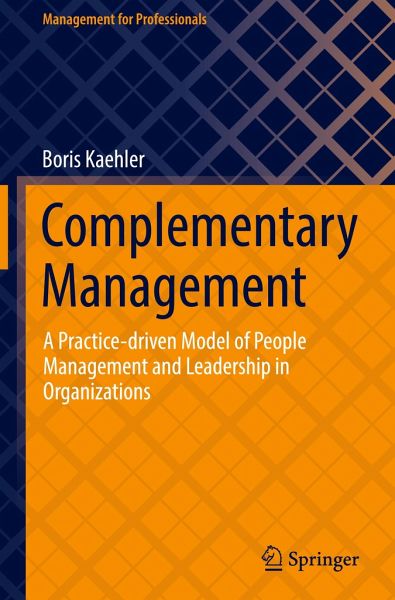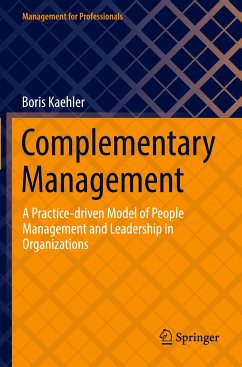
Complementary Management
A Practice-driven Model of People Management and Leadership in Organizations
Versandkostenfrei!
Versandfertig in 6-10 Tagen
74,89 €
inkl. MwSt.
Weitere Ausgaben:

PAYBACK Punkte
0 °P sammeln!
This book explores the Complementary Management Model. Building on extensive theoretical considerations on management and leadership, it outlines the seven elements of the model: the management actors (1) jointly fulfil management tasks (2) serving two management functions (3) by performing management routines (4) and applying formal management instruments (5), which requires management resources (6) and management unit structures (7). The key mechanisms of Complementary Management include the primacy of employee self-leadership, compensatory interventions of the line manager in the absence of...
This book explores the Complementary Management Model. Building on extensive theoretical considerations on management and leadership, it outlines the seven elements of the model: the management actors (1) jointly fulfil management tasks (2) serving two management functions (3) by performing management routines (4) and applying formal management instruments (5), which requires management resources (6) and management unit structures (7). The key mechanisms of Complementary Management include the primacy of employee self-leadership, compensatory interventions of the line manager in the absence of such self-steerage, and active roles for senior managers and HR advisors in the management/leadership process.
The Complementary Leadership Model is practice-oriented and offers a coherent conceptual basis for corporate models (= principles and guidelines) of management and leadership. The book describes the process for developing and introducing such guidelines and backs this up with project recommendations. It is aimed at all those interested in theory, but especially HR professionals and managers who shape management and leadership in their organizations and are looking for compelling theoretical foundations for their work.
The Complementary Leadership Model is practice-oriented and offers a coherent conceptual basis for corporate models (= principles and guidelines) of management and leadership. The book describes the process for developing and introducing such guidelines and backs this up with project recommendations. It is aimed at all those interested in theory, but especially HR professionals and managers who shape management and leadership in their organizations and are looking for compelling theoretical foundations for their work.












